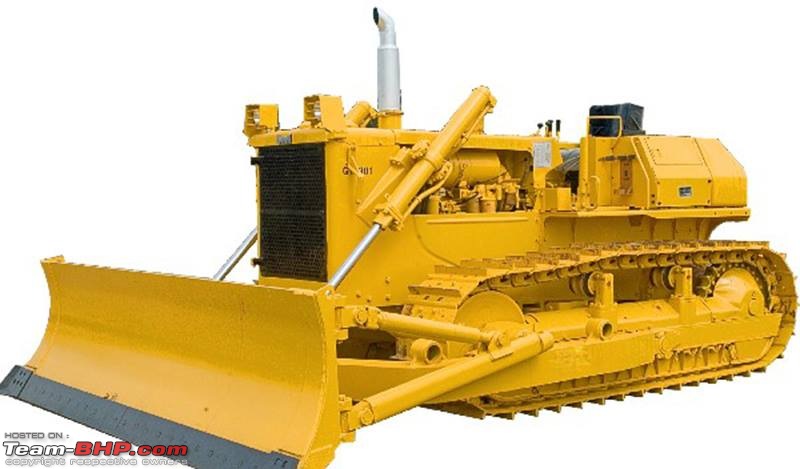Numerous travelogues have been written on online forums and websites about beautiful places like Ladakh, Spiti, Arunachal and other border areas. However visiting these places would have not been possible without the numerous roads built by none other than BRO. This elite force is now regarded as a symbol of nation-building, and has become an inseparable component in maintaining the security and integrity of the nation.
This thread is about the BRO.

Quote:
|
Let us not forget that roads in this difficult terrain have been built not only with mere cement and concrete, but also with the blood of men of the Border Roads Organisation of India. Many lost their lives for the cause of duty on the project. To these men, who always play with danger and laugh at death, duty comes first. These fallen heroes came from all parts of Mother India, to contribute their mite to the defence of their mother land and prosperity of their neighbours.
|
Source:
http://www.bro.gov.in/index2.asp?lan...95&projectid=9 Who is BRO?
BRO is an organization formed on 07th May 1960 which is responsible for developing and maintaining road networks in India's border areas.
The BRO consists of Border Roads Wing under the Ministry of Defense and the General Reserve Engineer Force (GREF).
The Border Roads Engineering Service (BRES) officers are governed by Central Civil Services (CCS/ CCA) Rules, 1965. They also subjected to all provisions of the Army Act, 1950 and Army Rules, 1954 except a few exceptions.
The BRO operates in 18 projects namely: Arunank, Beacon, Brahmank, Chetak, Deepak, Dantak (Bhutan), Himank, Hirak, Pushpak, Sampark, Setuk (currently non-functional), Sewak, Shivalik, Swastik, Udayak, Vartak and Vijayak. (Himank is the one in Ladakh).
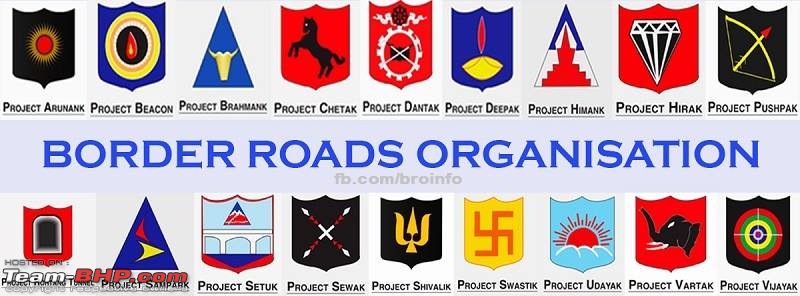
Source: BRO page on facebook.
A BRO official (engineering cadre) holds the designation of assistant executive engineer. He can rise up to the level of additional director general, the second highest post in the organisation. The Director-General Border Roads (DGBR) is the executive head of the BRO and is always a senior Army officer.
Role of the BRO:-
In Peace:
1. Develop & Maintain the Operational Road Infrastructure of General Staff in the Border Areas.
2. Contribute to the Socio-Economic Development of the Border States.
In War:
1. To Develop & Maintain Roads to Keep Line of Control through in Original Sectors and Re-Deployed Sectors.
2. To Execute Addl Tasks as laid down by the Govt Contributing to the War Effort.
Quote:
| The highest fatality rate in the Indian Army is not in its infantry battalions, or in fighting. It is in a force which is least spoken about and bears the maximum brunt for giving connectivity to sensitive border areas – the Border Roads Organization (BRO). |
BRO and neighbouring countries:
BRO is also instrumental in building roads in neighboring countries such as Afghanistan, Bhutan, Myanmar, Tajikistan and Sri Lanka.
Some projects:
--- The Delaram-Zaranj Highway in Afghanistan in 2008.
--- The Farkhor and Ayni air bases of Tajikistan restored and repaired.
--- In Bhutan - include the construction of Paro Airport, Yonphula Airfield, Thimphu – Trashigang Highway, Telecommunication and Hydro Power Infrastructure, Sherubtse College, Kanglung and India House Estate.
BRO movie link on BRO website : http://www.bro.gov.in/movie.asp Project Himank: One of the many projects of BRO, this project, aptly known as
Mountain Tamers, is located at the highest inhabited place in the world - Ladakh, and was started in August 1985. It is responsible to maintain line of communication through highest motorable road to highest battlefield in the world and from highest airfield to the highest lake.
Ladakh, which is strategically located, has China on the north and the south-east and POK on north-west. On the northern side, it has the mighty Karakoram Range, while on the southern side it has the Himalayas. Ladakh has witnessed all the wars that India has fought after Independance — 1947-48, 1962, 1965, 1971 and 1999 (Operation Vijay). Even the skirmish of Galwan valley in 2020 was in Ladakh.
Despite Ladakh’s significance from the angle of national security, successive Indian governments did not pay due attention to the development of Ladakh after Independence. Till the 1960s, people of Ladakh and defence personnel were using mules as the only mode of transportation. Finally, in 1985, the BRO carved out Project Himank for paying special attention to Ladakh alone. Thanks to the BRO, Ladakh has witnessed a lot of development. After the 1980's, the Indian Army was stationed at Siachen glacier, the world's highest battleground and the lines of communication had to be kept open throughtout the year, which is done till date. During Operation Vijay, the BRO staff had worked day and night to ensure that the Leh-Manali axis remained open. This was extremely important because of the interdiction of the Zoji-La axis by the enemy.
Project Himank remains cut off by land communication for almost six months from rest of the world and working season is barely six months for executing most of the original works. Inspite of these restriction imposed by nature, project Himank continued with enormous targets and achieved them.
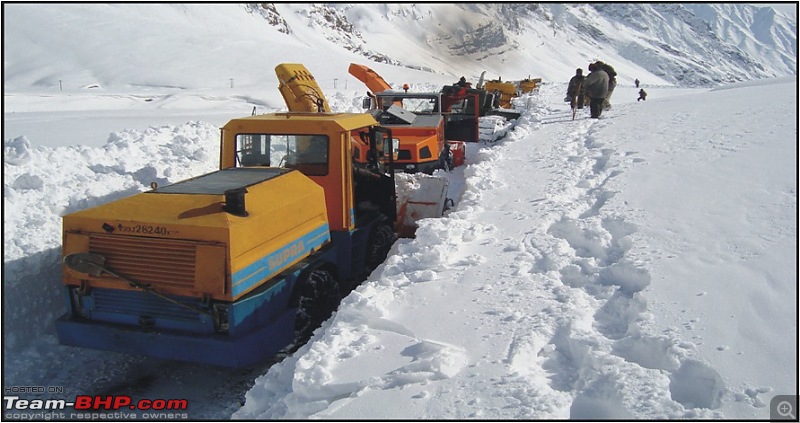
Source: BRO website.
The daredevils slog day and night in subzero temperatures and in conditions almost beyond human endurance to keep Changla and Khardungla open throughout the year and keep the hostile border in constant touch and vigil. Opening of Zojila, Rohtang, Baralachala and Tanglangla much ahead of schedule are testimony to the tireless and dauntless efforts of the BRO. It is only due to efforts of the BRO that Ladakh, higher reaches of Himachal, the Kashmir Valley and the dizzy heights of the North East are connected to the rest of the country.
Most of its manual labourers are from Bihar and Jharkhand state, not Ladakh.
Some important roads/projects under Himank:
1) Atal / Rohtang tunnel (Completed in 2020).
2) Col. Chewang Ringchen bridge - longest bailey bridge in India (completed in 2019).
3) Darcha bridge - 2nd longest bailey bridge in India (completed in 2020).
4) 86 kms. Chisumle to Demchok via Umling la at 19300 feet (completed in 2016 and took 6 years to complete).
5) Road over Saser la - under construction.
6) 255 kms. Durbok - Shyok - DBO road (one of the reasons for Galwan conflict).
7) Darcha - Padum - Nimmu road (3rd all weather axis).
8) Keeping passes like Khardungla and Changla open throughout the year.
The list is endless and mere construction is not the end game. Maintaining each road throughout the year is also equally difficult.
Some photos of BRO from their facebook page. 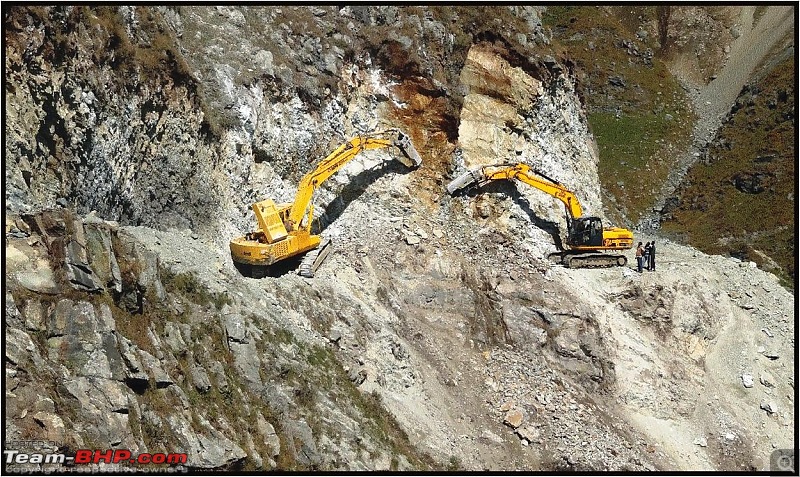



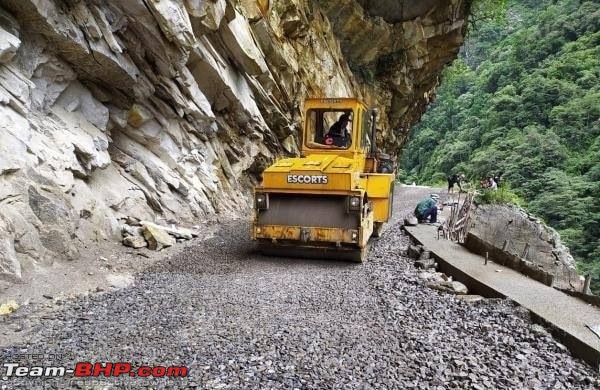

India-China Border Roads (ICBR) project is a Government of India project which aims to develop the infrastructure along the Sino-Indian border by constructing "strategic roads".[1] China in comparison, has significantly upgraded infrastructure in the Tibetan Autonomous Region with five airbases, an extensive rail network and more than 58,000 km of roads.[2]
As of May 2021, India is constructing at least 177 roads in two phases of over 10,023 km length along LAC under the “Border Infrastructure and Management Fund" (BIMF) of Ministry of Home Affairs, including 73 roads of 3,323 km length under ICBR-I (Phase-I) approved in 2005 and additional 104 roads of more than 6,700 km length under ICBR-II (Phase-II) approved in 2020. India has set up an inter-departmental "Empowered Committee" (EC) headed by the Ministry of Defence to expedite the issue resolution and timely completion of ICBR infrastructure after the delay in forest/wildlife clearance and land acquisition, rugged terrain, limited working season due to winter and rains, scarcity of construction material, etc resulted in the missed deadlines in the past.
 (65)
Thanks
(65)
Thanks
 (60)
Thanks
(60)
Thanks

 (5)
Thanks
(5)
Thanks

 (22)
Thanks
(22)
Thanks

 (10)
Thanks
(10)
Thanks
 (10)
Thanks
(10)
Thanks
 (4)
Thanks
(4)
Thanks
 (6)
Thanks
(6)
Thanks
 (4)
Thanks
(4)
Thanks
 (3)
Thanks
(3)
Thanks
 (3)
Thanks
(3)
Thanks
 (3)
Thanks
(3)
Thanks
 (5)
Thanks
(5)
Thanks
 (3)
Thanks
(3)
Thanks
 (1)
Thanks
(1)
Thanks













